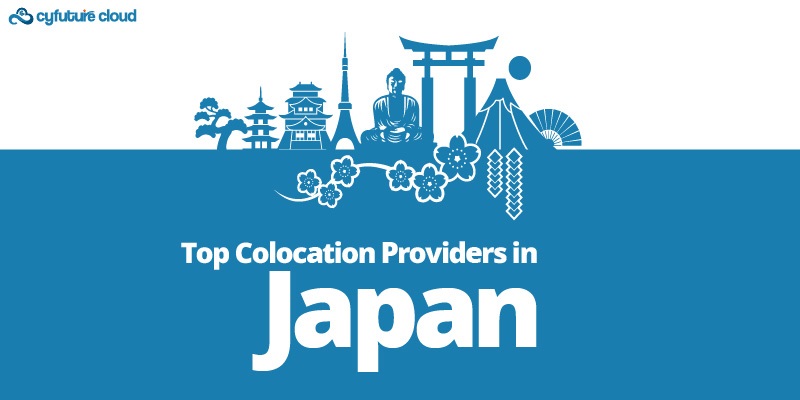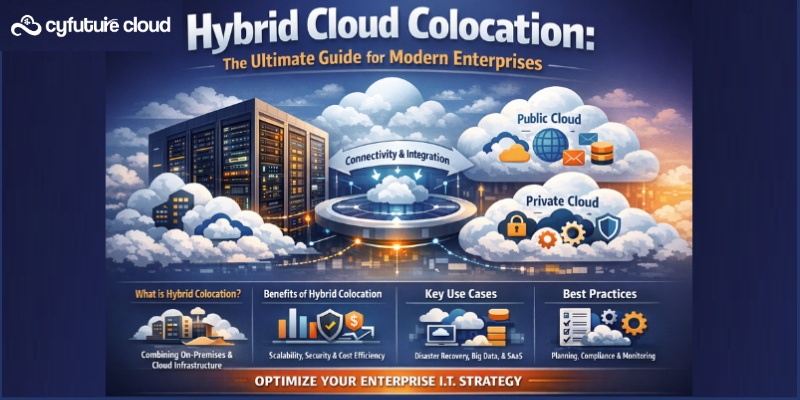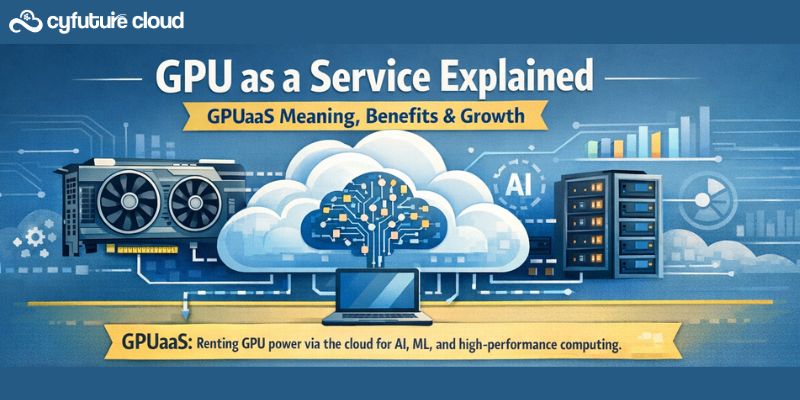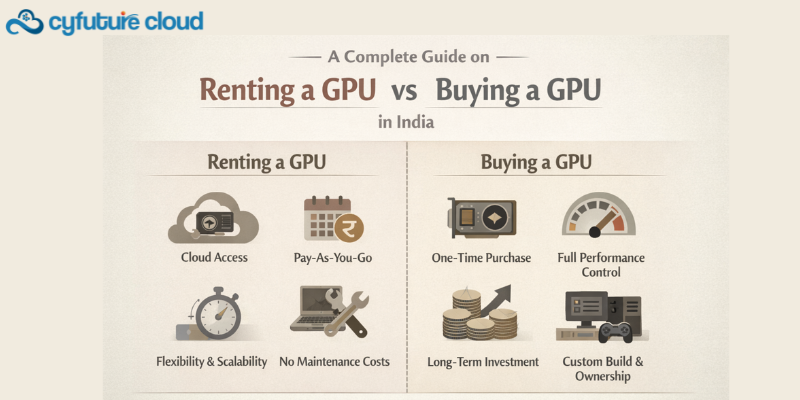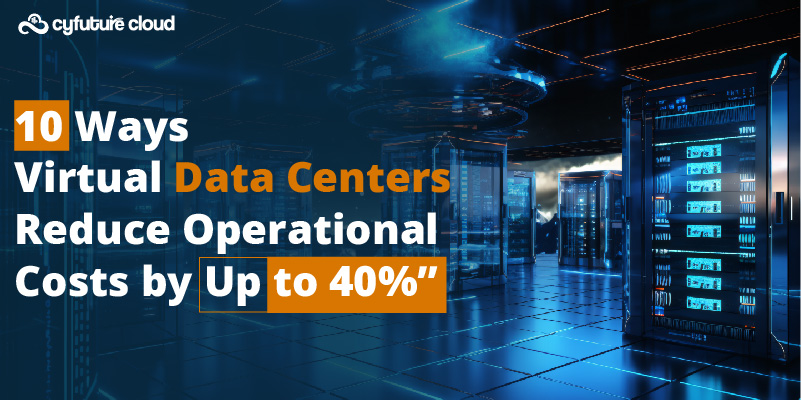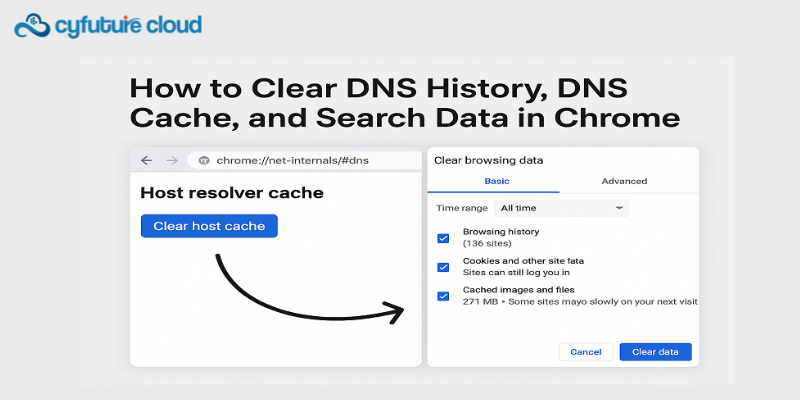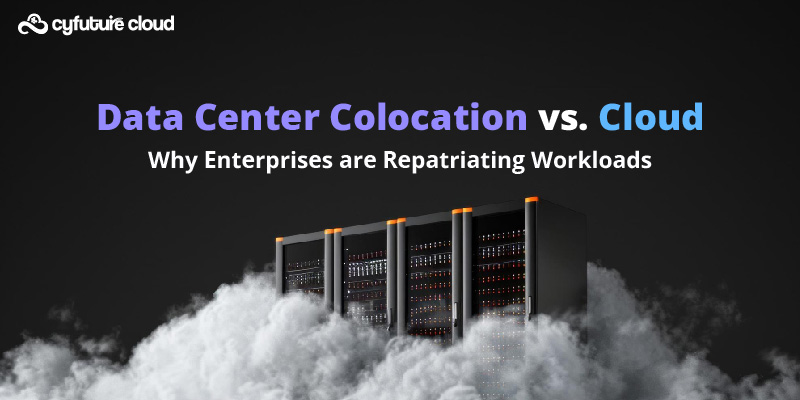Table of Contents
- What is Cloud Computing Stack?
- An Overview: Cloud Computing Stack Diagram
- Infrastructure as a Service (IaaS)
- Platform as a Service (PaaS)
- Software as a Service (SaaS)
- IaaS vs PaaS vs SaaS
- Benefits of Stack in Cloud Computing
- What are DevOps and Agile Methodologies?
- Transforming Development with Stack Cloud Computing Providers
- Final Words
Are you curious about how technology like cloud computing stacks up in today’s digital world? The concept of the cloud computing stack encompasses various cloud computing stack layers and components crucial for efficient cloud infrastructure management.
In this blog, we will unravel the unknown surrounding the cloud computing stack, exploring its layers through insightful cloud computing stack diagrams and explanations.
Moreover, we will delve into the significance of stack cloud computing providers in leveraging this framework to transform DevOps and Agile practices.
From understanding the fundamentals of the cloud computing stack to examining the pivotal role of stack cloud computing providers, we’ll navigate through key concepts to empower your development initiatives.
So, let’s embark on this journey to discover how stack cloud computing providers are reshaping the landscape of DevOps and Agile methodologies.
Let’s get started|!
What is Cloud Computing Stack?
In the digital industry, cloud computing is often likened to a stack. This analogy stems from the fact that it encompasses a range of cloud services stacked on top of one another within a “cloud” infrastructure.
The “Cloud Computing Stack” refers to the hierarchical structure of cloud computing services, typically categorized into layers. This cloud computing stack consists of Infrastructure as a Service (IaaS), Platform as a Service (PaaS), and Software as a Service (SaaS) layers.
At the base level, IaaS offers fundamental resources like virtual machines and storage. PaaS sits on top, providing development and deployment platforms for applications. Finally, SaaS, at the top of the stack in cloud computing, delivers ready-to-use software applications accessible over the internet. This layered architecture allows businesses to leverage cloud services according to their needs.
An Overview: Cloud Computing Stack Diagram
The cloud computing stack diagram [Below Figure] highlights the layers in the architecture of cloud computing, enabling one to understand the structure of services and technologies within cloud computing solutions.
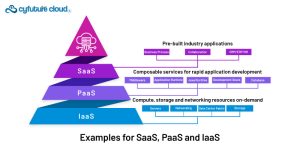
The IaaS, which stands for Infrastructure as a Service, is at the core of the diagram. It covers basic resources like virtual machines, storage, and networking.
Over IaaS is the Platform as a Service (PaaS) that delivers application development and deployment environments about which users do not have to worry about the infrastructural details.
The last cloud computing stack layer–the SaaS layer, is positioned at the top of the cloud computing stack. It offers individuals third-party applications over the web, and the software used in these applications is hosted in the cloud computing system.
Another aid to understanding these is the cloud computing stack layers diagram, which shows how each layer is developed on the other; specifically, the IaaS is the backbone on which PaaS and SaaS are developed. This kind of organization makes it possible for organizations to employ Cloud computing services depending on their requirements for availing infrastructure, applications, application development, or software.
Infrastructure as a Service (IaaS)
IaaS provides virtualized computing resources over the internet, including virtual machines, storage, and networking infrastructure.
Key Features:
- On-demand resources: Users can provision and manage infrastructure resources dynamically, scaling up or down based on demand.
- Flexibility: IaaS offers the flexibility to choose and configure computing resources according to specific requirements.
- Reduced hardware investment: Organizations can eliminate the need for physical hardware and infrastructure maintenance.
Integration with DevOps: IaaS facilitates infrastructure automation and provisioning, aligning with DevOps principles of continuous integration and delivery (CI/CD). DevOps teams can use IaaS to rapidly deploy and scale infrastructure resources, enabling faster delivery of software updates and enhancements.
Platform as a Service (PaaS)
PaaS enables organizations to develop, test and implement their applications in a secure environment without the burden of managing the IT infrastructure.
Key Features:
- Development tools: PaaS delivers development tools, frameworks, and middleware to help developers develop applications on the platform.
- Scalability: Iaas providers self-provision resources to run applications as needed because they achieve elastic properties that directly reflect an application’s demand and utilization patterns.
- Reduced development time: The resources and services provided by the cloud solutions are scalable, which helps the developers and organizations avoid the challenges of having to invest in their own physical systems and networks.
Integration with Agile Methodologies: PaaS also promotes the use of Agile in development by providing platforms for developing at a very high speed with increased collaboration. PaaS platforms can, therefore, assist agility in this by enabling the development of applications that can deliver small changes to the client within short cycles in response to changing client requirements.

Software as a Service (SaaS)
SaaS involves making application software available over the Internet on demand as a service, where clients pay only for the use of the software.
Key Features:
- Accessibility: SaaS applications can be accessed from any device 24/7.
- Automatic updates: Software updates and maintenance are one of the many responsibilities that SaaS providers take up to guarantee.
- Scalability: SaaS applications are self-provisioned to support increasing numbers of users as well as growing data demands.
Integration with DevOps: SaaS applications minimize setup and distribution, which is in clear harmony with DevOps practices such as automation and continuous delivery. With SaaS apps, DevOps teams can perform deployments, integrate new solutions into various processes, and track efficiency to guarantee they work well.
IaaS vs PaaS vs SaaS
Let’s understand the main differences between IaaS, PaaS, and SaaS. We’ll cover everything from the important features of reliable stack cloud computing providers to how they relate to DevOps and Agile methods.
|
Feature |
Infrastructure as a Service (IaaS) |
Platform as a Service (PaaS) |
Software as a Service (SaaS) |
Examples |
AWS, Microsoft Azure, GCP, Cyfuture Cloud |
Microsoft Azure App Service, Google App Engine, Heroku |
Salesforce, Google Workspace, Microsoft 365 |
Key Features |
On-demand resources, Virtualized infrastructure, Scalability, Flexibility, Reduced hardware investment, Pay-as-you-go pricing model |
Development tools and frameworks, Application lifecycle management, Scalability, Reduced development time, Automatic scaling and load balancing, Deployment automation |
Accessibility, Automatic updates, Scalability, Multi-tenancy architecture, Reduced maintenance effort, Global accessibility, Subscription-based pricing model |
Integration with Agile |
Supports rapid provisioning and scaling of infrastructure resources, Enables Agile teams to respond quickly to changing requirements, Facilitates infrastructure as code (IaC) and automated testing, Enables continuous integration and delivery (CI/CD) pipelines |
Provides development environments and tools for collaborative development, Facilitates rapid development cycles and iterative development practices, Enables continuous integration and delivery (CI/CD) pipelines, Supports automated testing and deployment, Enables feedback loops for rapid iteration and improvement |
Facilitates rapid deployment of software updates and enhancements, Supports incremental delivery of features and functionality, Enables continuous integration and delivery (CI/CD) pipelines, Facilitates user feedback and iteration, Enables rapid response to changing customer needs, Streamlines maintenance and updates |
Integration with DevOps |
Enables infrastructure automation and provisioning, Supports DevOps practices such as continuous integration and delivery (CI/CD), Facilitates infrastructure as code (IaC) and automated testing, Enables monitoring and logging for operational insights, Supports collaboration between development and operations teams |
Automates deployment processes and provides tools for continuous integration and delivery (CI/CD), Enables infrastructure as code (IaC) for repeatable and consistent deployments, Facilitates collaboration between development, operations, and quality assurance teams, Provides monitoring and logging for operational visibility and troubleshooting, Supports continuous improvement and feedback loops |
Facilitates the rapid delivery of software updates and enhancements, Enables continuous integration and delivery (CI/CD) pipelines, Supports automated testing and deployment, Provides monitoring and logging for operational insights, Enables collaboration between development, operations, and support teams, Streamlines maintenance and updates |
|
Responsibility |
Users are responsible for managing and maintaining their applications and data. |
Cloud provider manages underlying infrastructure, including servers, storage, and networking. Users are responsible for managing applications and data. |
Cloud provider manages the entire software stack, including infrastructure, middleware, and applications. Users are responsible for configuring and using the software. |
Scalability |
Scalability is provided by the cloud provider, allowing users to scale resources up or down based on demand. |
PaaS platforms offer automatic scaling of resources, ensuring optimal performance and availability for applications. |
SaaS applications scale automatically to accommodate growing user bases and increasing data volumes. |
Flexibility |
Provides flexibility in choosing and configuring computing resources according to specific requirements. |
Offers flexibility in development, enabling developers to focus on writing code without worrying about infrastructure management. |
Provides limited flexibility as users must use the features and functionalities offered by the SaaS provider. |
Development Time |
Infrastructure setup and management may require more time compared to PaaS and SaaS solutions. |
Development time is reduced as developers can leverage pre-configured development environments and tools. |
Development time is further reduced as users can quickly start using the software without the need for installation and setup. |
Benefits of Stack in Cloud Computing
Stack in cloud computing, typically categorized as Infrastructure as a Service (IaaS), Platform as a Service (PaaS), and Software as a Service (SaaS), offers numerous benefits to businesses and organizations. Scroll to explore a few of them:
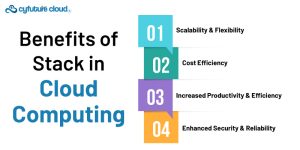
Scalability and Flexibility
This is true because the stack can be quickly and easily scaled in cloud computing. One significant advantage is that companies do not have to spend millions in infrastructure to address workload changes; they can just scale up or scale down instead. Due to this flexibility, they can maintain perfect standards of business performance and, at the same time, do not waste much on resources, as they can quickly adapt to the changing needs of the business.
Cost Efficiency
The utilization of a cloud computing stack is helpful here as it allows firms to reduce the costs of obtaining IT solutions. Pay-per-use models are self-funding, they help to reduce capital costs by promoting the use of shared hardware and infrastructure, and firms only pay for the levels of utilization of resources and services consumed. Moreover, by organizing the acquisition through long-term contracts mentioned earlier, companies can also get certain discounts from cloud providers, given the additional decrease in operating costs.
Increased Productivity and Efficiency
In this case, manual procedures, such as provisioning, deployment, or administration, are automated through the cloud computing stack so that IT operations can be enhanced and efficiency is increased. Employe0 Information Technology may dedicate their time to mast innovation and new strategic projects instead of routine maintenance work once automated processes are implemented. This efficiency allows organizations to maintain a competitive advantage, to better meet current market demands, or, for example, to complete projects within a shorter timeframe.
Enhanced Security and Reliability
Cloud computing platforms provide robust security attributes regarding compliance certifications to ensure that data and applications are private, reachable, and complete. To avoid the risks from cyber criminals and ensure data privacy, cloud providers invest significant amounts of funds in security based on encryption, identity and access control, and security control tests and evaluations. Moreover, many cloud solutions are usually known for impressive uptime and reliability, which decrease the probability of interruptions and provide stable business operations.
Key Note: Incorporating a stack in cloud computing aligns seamlessly with Agile and DevOps methodologies, further enhancing their benefits:
Agile Methodologies
DevOps Practices
Scroll down to explore DevOps and Agile methodologies:
What are DevOps and Agile Methodologies?
DevOps and Agile methodologies are pivotal in modern software development, revolutionizing how teams collaborate, deliver, and iterate on software projects.
DevOps is an approach to software development that bolsters cross-functional partnerships between the development (Dev) and operations (Ops) groups in the entire lifecycle of a project. It is to help implement automation, a stringent CI/CD culture, and be agile and efficient in releasing the software to the market.
DevOps also leads to better communication across levels; it fosters the end of silos, which encourages cross-functional teams to work better and deliver high-quality software within a shorter time, improves the frequency of deployment, and enables the firm to adapt to changing customer needs.
Agile is a software development methodology that involves the frequent repetition of an integrated and repetitive process model. Customers can provide feedback after each phase of development. Scrum and Kanban are two of the most common examples of agile methodologies, which are based on the idea of stepped product planning, creation, and release.
In an iterative process, teams are formed to work cooperatively in short, periodical cycles called iterations, during which small sets of software features are completed. This makes it possible for teams to close down one cycle and open another, the other advantage is that all the different cycles enable one to get feedback in small portions frequently while at the same time availing value to the customers frequently.
Transforming Development with Stack Cloud Computing Providers
Businesses are continuously looking for methods to improve the efficiency of their software delivery and development processes in the fast-paced digital ecosystem of today. Here’s where stack cloud computing providers come into play, providing a variety of tools and services that transform teams’ use of Agile and DevOps processes.
Facilitating Collaboration
The involvement of both development and operation personnel and all other teams is crucial in both DevOps and Agile methodologies. Integrating cloud computing companies’ stack makes it easy for groups to share their working platform regardless of the physical space. Some of these features are an integrated development environment, shared repositories, and real-time communication tools, which help teams to collaborate effectively and complete tasks within the shortest time possible.
Enabling Automation
Two other crucial components of DevOps and Agile are automation, where people can achieve fast delivery cycles, reduce complexities, and perform more automated work. Many automation solutions and services, including automated integration, deployment and delivery pipelines, and other infrastructure automation solutions, are offered by stack cloud computing providers. If implemented, these automation tools could reduce human errors, increase utility, and deliver quality software in less time.
Scaling Infrastructure
Modularity is unavoidable in contemporary SW development since progressive evolvement entails scalability, especially in an environment characterized by constant fluctuations. Using stack cloud computing, it could be easily adjusted by the amount of demand that exists in the market, this ensures efficiency and cost-effective means for the teams to scale the infrastructure resources up or down as they may deem fit. Cloud hosting providers offer the versatility and the mom point needed to meet the dynamic needs of businesses, where it can host more servers to address traffic surges or fewer servers in light of slow traffic.
Enhancing Agility
The two main frameworks that are ideal for IT and software development are also categorized under the agility aspect, where it was deemed as the organization’s ability to quickly adapt to the needs and respond to them and deliver value to the customers at a fast pace. Committed to offering a broad spectrum of services and tools to continually build and develop iterations, HaaS cloud computing providers foster innovation through rapid prototyping and end-to-end delivery. Here one could incorporate such abilities as microservices design, serverless computing, and containerization which might allow the teams to play around and come up with new ideas, as well as enhance the productivity rate and frequency of feature iterations.

Final Words
In today’s environment characterized by constant technological change, the use of stack cloud computing providers as a means of implementing new approaches for constructing businesses’ IT strategies has proved instrumental.
In this blog, we have looked at the differences in the cloud computing stack, where there are different layers and components that play significant roles in managing cloud infrastructure.
Starting from the infrastructure-centric level, like Infrastructure as a Service (IaaS), up to the business-service-oriented level, like Software as a Service (SaaS), each level holds a significant role in allowing organizations to fully take advantage of the consequential cloud computing environment.
Furthermore, stack cloud computing providers act as enablers when it comes to deploying this framework to enhance the DevOps and Agile approaches.
Cyfuture Cloud stack is a cloud computing provider that offers a range of cloud services and solutions, including IaaS, PaaS, and SaaS offerings. We enable businesses to harness the power of the cloud and accelerate their digital transformation journey.
Let’s embark on this cloud stack in cloud computing journey together and discover the endless possibilities that stack cloud computing offers for your business.
Recent Post
Send this to a friend

 Server
Colocation
Server
Colocation CDN
Network
CDN
Network Linux
Cloud Hosting
Linux
Cloud Hosting Kubernetes
Kubernetes Pricing
Calculator
Pricing
Calculator
 Power
Power
 Utilities
Utilities VMware
Private Cloud
VMware
Private Cloud VMware
on AWS
VMware
on AWS VMware
on Azure
VMware
on Azure Service
Level Agreement
Service
Level Agreement 




